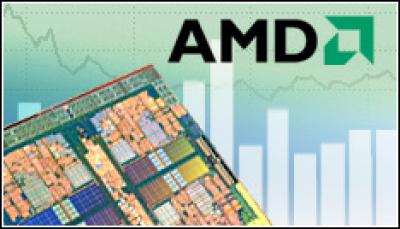AMD’s Istanbul Goes Head To Head With Intel

AMD has announced its 6-core Istanbul chip. How will it fare against Intel’s 8-core Nehalem EX?
Raghuram Tupuri was the lead architect for Shanghai, and Steven Hesley was the lead for Istanbul.
With Istanbul, AMD officials first decided in March 2008 to put it on the product road map to meet demand from OEMs and end users, and within 15 months is ready to ship, Patla said.
The chip will give users a 30 percent bump in performance/watt, and a 40 to 50 percent improvement in performance, all within the same price and thermal envelope of its predecessor, he sai
“This is going to be a far superior product,” Patla said.
AMD’s HT Assist gives better throughput
It is also going to come with a technology call HT Assist, which John Fruehe, director of business development for server and workstation products at AMD, said in a May 26 blog “can give you much better throughput over the HyperTransport technology connections by reducing the amount of traffic generated by the processors in seeking the shortest path to data that they need.”
Such technology will make the chip attractive to high-end server users and those in the HPC (high-performance computing) field, Patla said.
That’s an area that both AMD and Intel are eyeing with their new chips, and one that could be a fertile area for them, according to John Spooner, an analyst with Technology Business Research.
“The trend we’re seeing is that there is a certain percentage of customers who are looking to scale down from a RISC/Itanium/mainframe-type machines to the high end of the x86 market,” Spooner said in an IM interview. “These customers are moving into top-of-the-line four-way and higher x86 servers.”
The global recession is playing a role in this decision, but more so is the improved performance and capabilities of x86 servers, particularly around virtualisation, Spooner said.
Patla said Istanbul will be able to scale up to the eight-socket space, but added that it is a small part of the overall x86 server market, so much so that with its new chips scheduled for release in 2010, AMD won’t pursue the eight-socket space.
Who gets the RISC shift?
But the high-end x86 server market will be another area in which Intel and AMD will compete.
“Customers are still looking to Intel [to help them] move off RISC,” Intel’s Davis said while discussing Nehalem EX.
Currently, Intel offers the six-core “Dunnington” processor for that space and is still pushing its Itanium chip for the high-end RISC-replacement market. In a response to a question, Davis said he didn’t anticipate that Nehalem EX will have a negative impact on Intel’s troubled Itanium chip, but did say company officials plan to expand Xeon’s reach as far as possible.